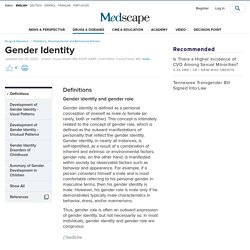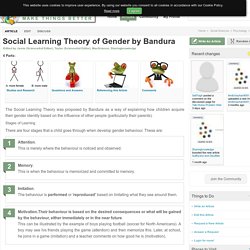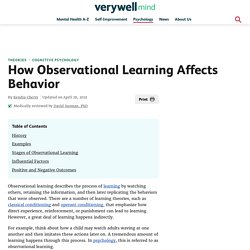

We'll share about how preschool-aged children learn about gender roles and identity develops. With this knowledge, you would be able to think about how you can best support your child's development as they blossom into amazing individuals!
Gender Identity: Definitions, Development of Gender Identity - Usual Patterns, Development of Gender Identity - Unusual Patterns.
Conditions Resulting From Genetic or Hormonal Influences Changes to the usual process of fetal development cause numerous differences in the resulting fetus.

When levels of prenatal hormones are altered, phenotypic progression is also altered. The inherent brain bias toward one sex may be discordant with the genetic makeup of a fetus, or even with its external anatomic presentation. Other variations lead to psychologic stressors in later development but have their origin in the prenatal stage. What is Gender Identity? Gender Identity Development in Children. By: Jason Rafferty MD, MPH, EdM, FAAP There are many ways parents can promote healthy gender development in children.

It helps to understand gender identity and how it forms. What's the difference between gender and sex? Being a boy or a girl, for most children, is something that feels very natural. Gender identity. Gender identity refers to the deep and intimate feeling a person has of themselves.

Children begin to understand and express their gender identity early in life. This article discusses how gender identity typically develops and how parents and caregivers can promote healthy development of gender identity and expression in children. It's important to remember that each child is unique and may develop at a different pace.
What we mean by gender: Some useful definitions Sex at birth: When children are born, sex is assigned based on external genitalia. What are Gender Roles? Gender roles and identity in children. It’s common for people to think of the terms ‘sex’ and ‘gender’ as being the same, but they mean different things.

Someone’s sex refers to their physical biology: being male or female. A person’s gender identity, however, is a person’s sense of who they are – male, female, both or neither. How Parents Influence Kids' Gender Roles. How Albert Bandura's Social Learning Theory Works. Learning is a remarkably complex process that is influenced by a wide variety of factors. As most parents are probably very much aware, observation can play a critical role in determining how and what children learn.1 As the saying goes, kids are very much like sponges, soaking up the experiences they have each and every day.
Because learning is so complex, there are many different psychological theories to explain how and why people learn. A psychologist named Albert Bandura proposed a social learning theory which suggests that observation and modeling play a primary role in this process.2 Bandura's theory moves beyond behavioral theories, which suggest that all behaviors are learned through conditioning, and cognitive theories, which take into account psychological influences such as attention and memory. 0 seconds of 0 secondsVolume 90% Overview of Social Learning Theory. Social Learning Theory of Gender by Bandura - ScienceAid. Edited by Jamie (ScienceAid Editor), Taylor (ScienceAid Editor), MaxScience, Sharingknowledge The Social Learning Theory was proposed by Bandura as a way of explaining how children acquire their gender identity based on the influence of other people (particularly their parents).

Stages of Learning There are four stages that a child goes through when develop gender behaviour. Key ideas in Social Learning Theory and Gender. Social Learning Theories of Gender Role Formation (4:19 minutes - 6:43 minutes) Social Learning Theory on Gender development. How does social learning theory explain gender development? Observational Learning: Examples, Stages, History.
Observational learning describes the process of learning by watching others, retaining the information, and then later replicating the behaviors that were observed.

There are a number of learning theories, such as classical conditioning and operant conditioning, that emphasize how direct experience, reinforcement, or punishment can lead to learning. However, a great deal of learning happens indirectly. For example, think about how a child may watch adults waving at one another and then imitates these actions later on. A tremendous amount of learning happens through this process. In psychology, this is referred to as observational learning. Untitled. How Gender Stereotypes Kill a Woman’s Self-Confidence. Women make up more than half of the labor force in the United States and earn almost 60 percent of advanced degrees, yet they bring home less pay and fill fewer seats in the C-suite than men, particularly in male-dominated professions like finance and technology.

This gender gap is due in part to “occupational sorting,” with men choosing careers that pay higher wages than women do, labor economists say. For example, women represent only 26 percent of US workers employed in computer and math jobs, according to the Department of Labor. New research identifies one reason women might be shying away from certain professions: They lack confidence in their ability to compete in fields that men are stereotypically believed to perform more strongly in, such as science, math, and technology.
What are gender stereotypes and how to stop them? On 16 June 1963, in the midst of the Cold War struggle between the United States and the Soviet Union to conquer space, Valentina Tereshkova became the first female astronaut.

On board the Vostok 6 and at only 26 years old, the Seagull — that was her call sign during the flight — made history and became a symbol of equality between men and women. During the 70 hours and 50 minutes she was away from Earth she circled the planet 48 times. Nothing more and nothing less. Who said impossible? Gender Stereotypes: Kids Believe Them By Age 10. Commentary: What’s behind varying attitudes about gender equality in Singapore. SINGAPORE: For all the progress made in improving understanding between men and women in the road towards gender equality, the biggest hurdle to cross is the one between our ears.

Some women’s issues in the news have sparked online debates on gender equality in Singapore – from Facebook to Twitter and Reddit. These online discussions typically raise the usual contentions: Females, without National Service obligations, have an unfair head start at work. Women are more likely to gain custody of young children after a divorce even if men are good fathers. Or that a woman’s accusation of a sexual crime is taken more seriously than a man’s denial. Despite detailed responses debunking relevant myths by the authorities from time to time, there are corners of our population who continue to feel uneasy, even discontented about societal goals of greater gender equality.
Social Cognitive Theory of Gender Development and Differentiation. Learning about Gender Diversity and Fairness. What the Research Says: Gender-Typed Toys.